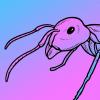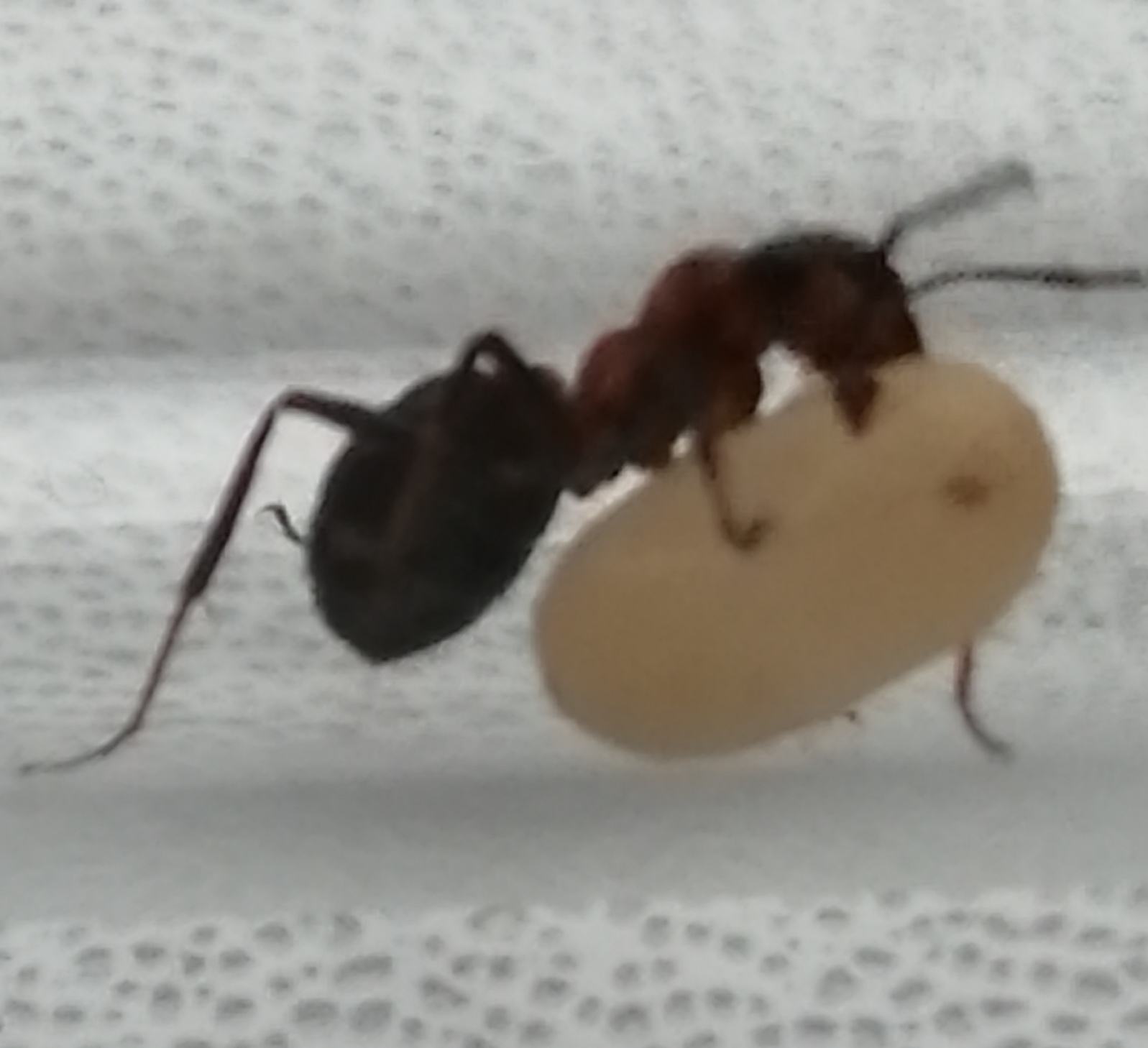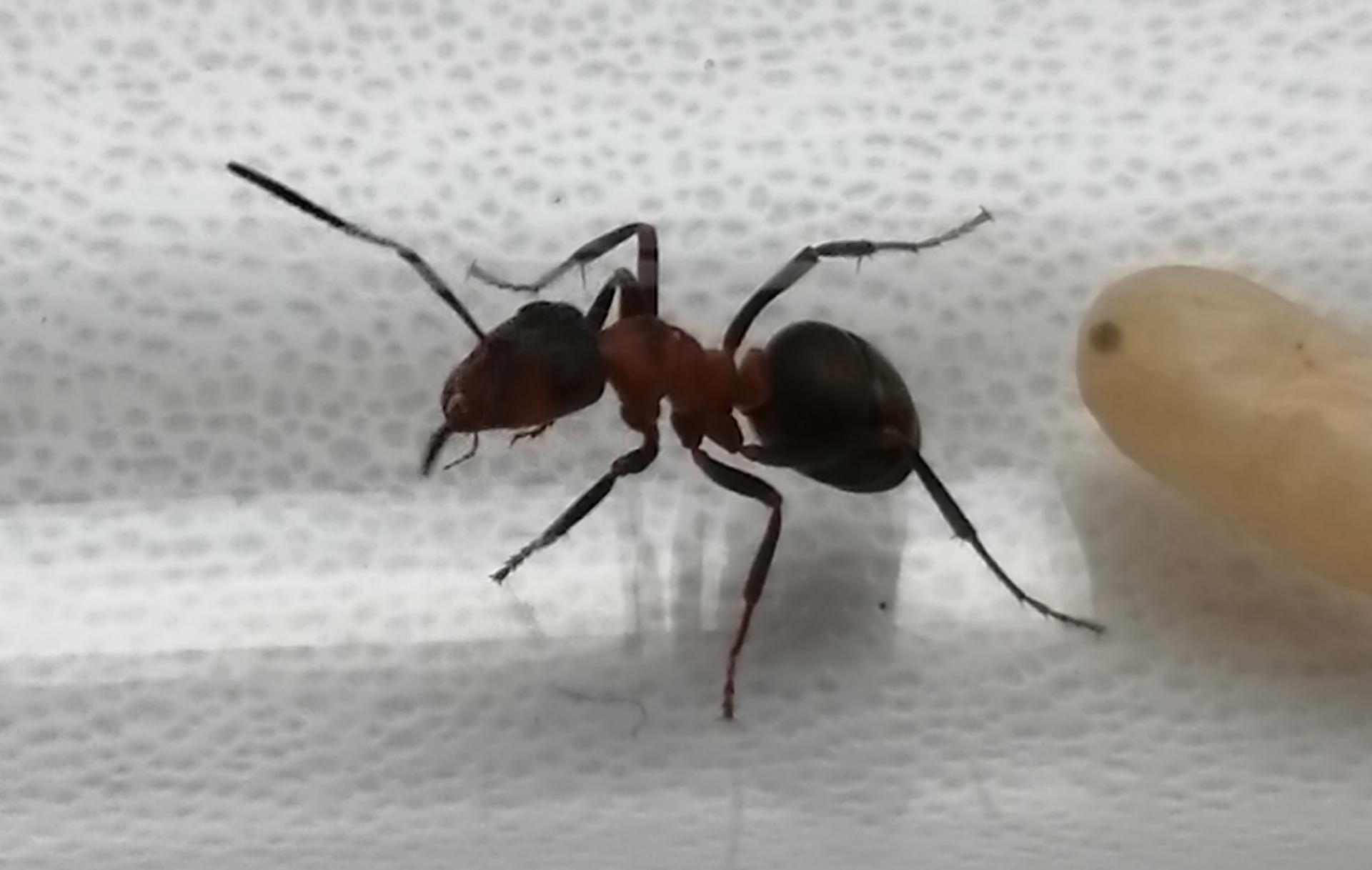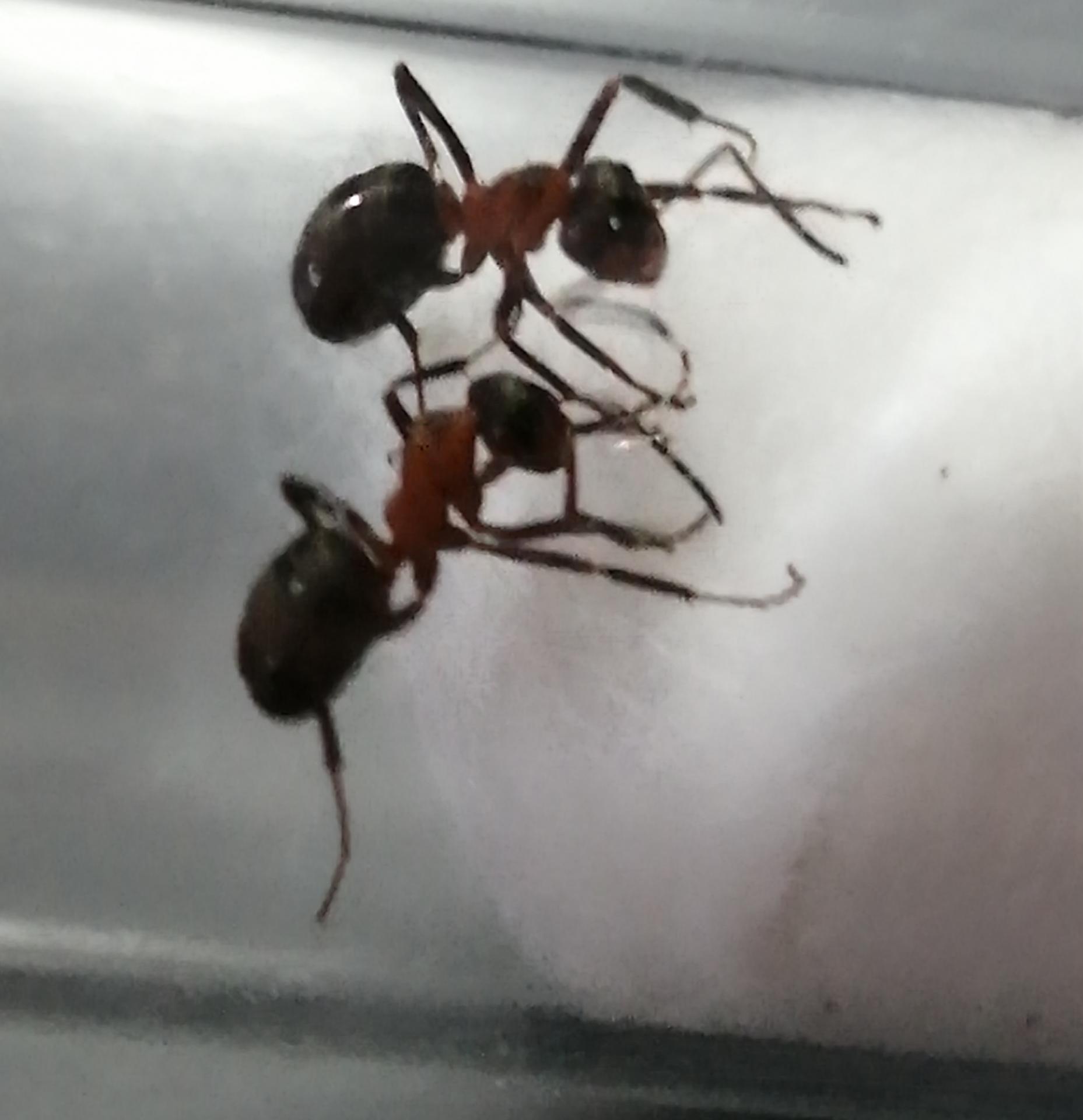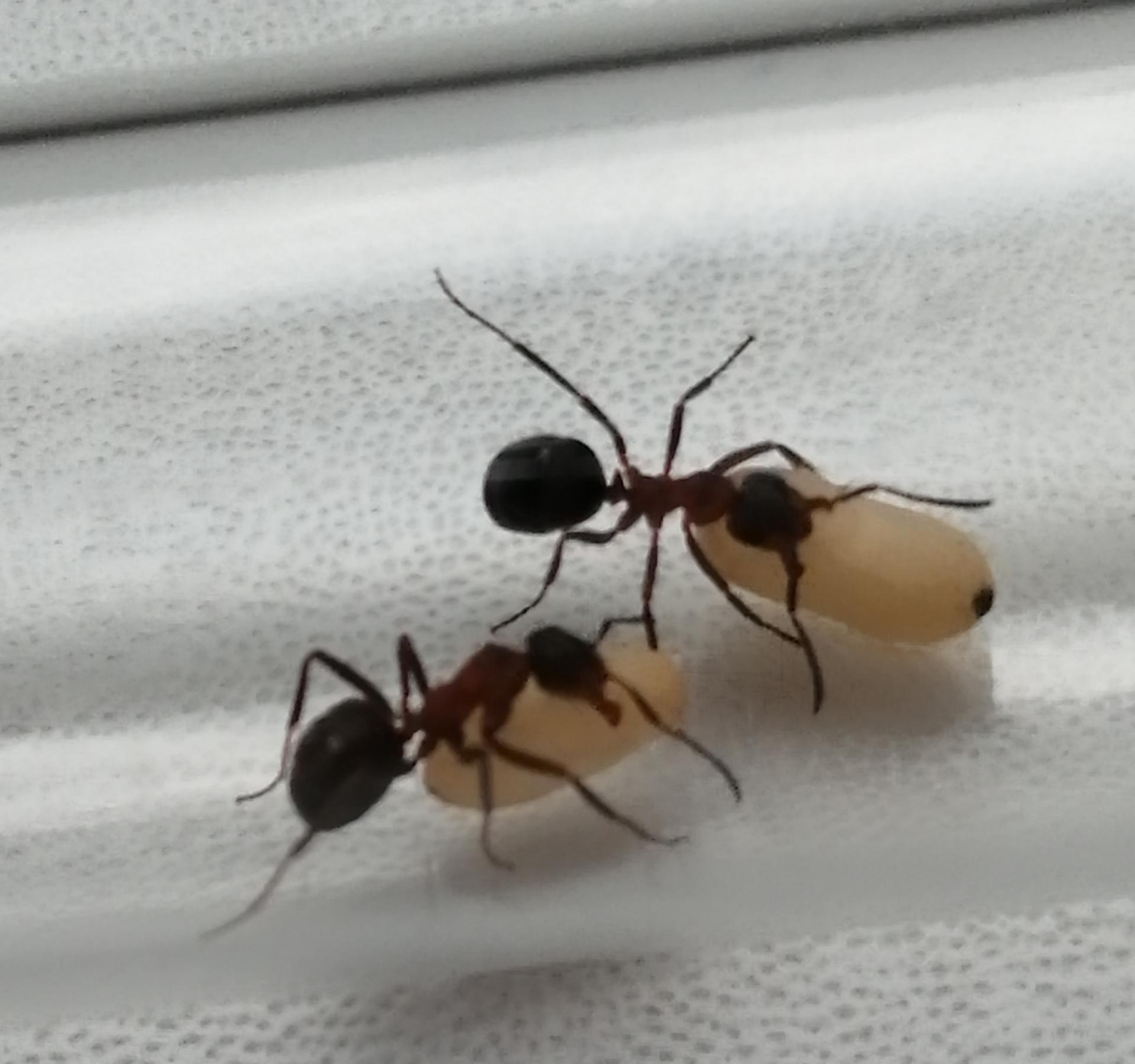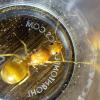1. Western Siberia
2. Date: June 27th
3. Habitat of collection: the nest was in soil on a path in urban area
4. Length (from head to gaster): 6-7 mm
5. This worker has red thorax with a black spot on the pronotum, gaster is completely black, head is black at the top and the cheeks are reddish.
6. Distinguishing characteristics: see below
7. Distinguishing behavior: typical aggressive Formica behavior
8. Nest description: it is a low crater-looking pile of small sticks and dry grass blades built on a side of the path walk, which looks like a Serviformica nest
9. Nuptial flight time and date: didn't see any alates at the entrance of the nest
So I was walking along the path and saw this scene: the workers were coming out of the nest holding pupae, crossing the path and hiding in grass where I could no longer see where they were moving the pupae. There was a worker coming out of the nest every few seconds, so I caught two of them for ID. I don't think the nest was being invaded, that didn't look like a raid and I've seen this nest with these workers before.
I think it's Serviformica rufibarbis or Formica Cunicularia
Can you tell what they were doing with pupae?
Edited by Max_Connor, June 27 2021 - 7:15 PM.

